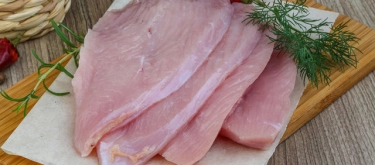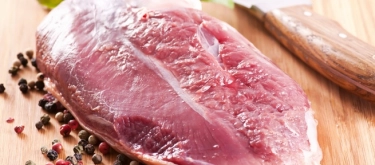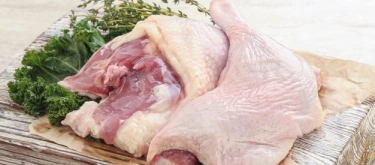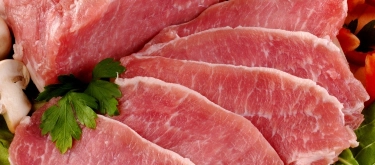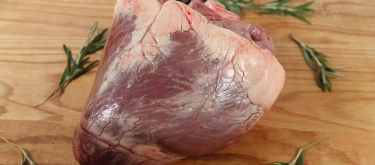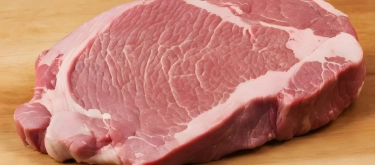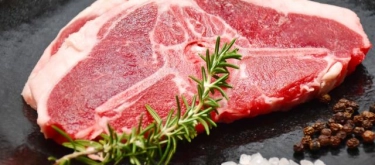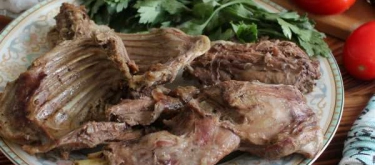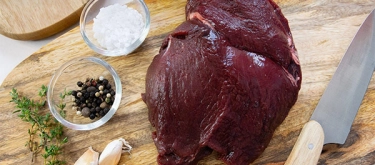Chicken Breast: Taste Profile, Aroma, Benefits and Health Risks
Chicken breast, known for its mild flavor, lean nutritional profile, and exceptional culinary versatility, is one of the world's most consumed meats. Originating as a dietary staple in cuisines across various cultures, chicken breast is highly valued for its protein-rich, low-fat qualities. Its adaptability in countless dishes, from everyday cooking to gourmet meals, makes it a foundational ingredient in kitchens worldwide.
Chicken breast is animal-based meat, making it unsuitable for vegetarians and vegans. It is naturally gluten-free but must be cooked thoroughly to eliminate potential pathogens, including Salmonella. Cross-contamination with allergens during preparation (seasonings or marinades) should be avoided.
What does Chicken Breast taste like?

Complete Sensory Description
Taste:
Chicken breast has a subtle, mild, slightly sweet flavor profile, gently savory without pronounced gaminess. Its neutral taste allows it to absorb flavors exceptionally well from seasonings, marinades, sauces, or cooking methods.
Aroma:
Fresh chicken breast emits a very mild, neutral poultry aroma. Cooked chicken breast develops comforting aromas, particularly when grilled, sautéed, or roasted—ranging from delicate caramelization to subtle herbal or spice notes.
Texture:
When cooked correctly, chicken breast is tender, moist, and firm yet juicy. Overcooking easily results in dryness, emphasizing careful preparation methods to preserve optimal texture.
Appearance:
Fresh chicken breast is pale pink, firm, and lean with minimal fat. Cooked chicken breast develops an appealing white color with subtle golden, caramelized, or browned exteriors, depending on cooking methods.
Varieties and Culinary Uses
-
Skinless, Boneless Chicken Breast:
Lean, versatile, suitable for grilling, pan-searing, baking, or stir-frying. -
Bone-in Chicken Breast:
Retains more moisture and flavor; ideal for roasting or slow-cooking to achieve tender, flavorful results. -
Chicken Breast Strips:
Convenient for stir-fries, salads, wraps, sandwiches, or quick cooking preparations.
In-depth Flavor Analysis
-
Mild, Versatile Flavor:
Chicken breast’s neutral, gentle sweetness pairs perfectly with numerous flavors, marinades, herbs, and spices, making it ideal for versatile culinary preparations. -
Flavor Enhancement:
Chicken breast readily absorbs seasonings, marinades, and flavors due to its neutral taste, allowing endless culinary creativity. -
Texture and Moisture Balance:
Optimal cooking methods preserve moisture and tenderness, enhancing taste through juicy, succulent textures that complement its mild flavor. -
Flavor Evolution:
Chicken breast flavor deepens subtly with careful roasting or grilling, taking on delicate savory nuances while remaining clean and fresh.
Culinary Applications
-
Grilling and Pan-Frying:
Popular preparation methods for salads, sandwiches, and main dishes, offering quick, healthy, and delicious meals. -
Roasting and Baking:
Whole or bone-in chicken breasts roast beautifully with herbs, spices, or citrus for tender, juicy results. -
Soups, Salads, and Pasta Dishes:
Cooked, diced, or shredded chicken breast enhances salads, soups, pasta dishes, casseroles, or grain bowls. -
Healthy and Fitness Meals:
Chicken breast is a favored protein choice in healthy diets, meal prepping, and fitness nutrition plans due to its high protein content and low calorie profile.
Selection and Storage
Selecting Quality Chicken Breast:
- Choose fresh chicken breast with firm, moist texture, pale pink color, and no off-odor or discoloration.
- Avoid products with excessive liquid, sliminess, or unpleasant smells—clear indicators of spoilage.
Storage Recommendations:
- Refrigerate immediately below 4°C (39°F), consume fresh chicken breast within 1–2 days.
- Freeze chicken breast for extended storage, tightly wrapped, and consume within 3–6 months for best quality.
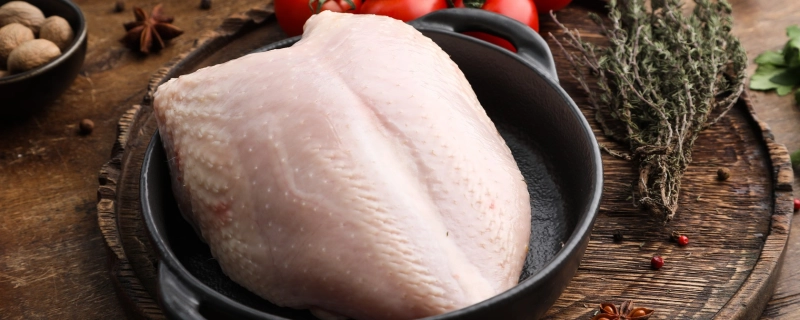
Nutritional Insights
-
High-Quality Protein:
Excellent source of lean protein essential for muscle growth, repair, and maintaining overall health. -
Low in Fat:
Very lean compared to other meats, ideal for weight management, heart-healthy diets, and calorie-conscious nutrition. -
Vitamins and Minerals:
Rich in B vitamins (B6, B12, niacin), phosphorus, selenium, magnesium, and potassium, crucial for energy production, muscle function, and immune health.
Expert Insights & Culinary Tips
-
Avoid Overcooking:
Experts stress careful cooking (internal temperature of 74°C or 165°F) to retain moisture and tenderness, preventing dryness. -
Flavor Pairings:
Combine chicken breast with citrus, garlic, ginger, soy sauce, fresh herbs (rosemary, thyme, basil), or creamy sauces for enhanced taste profiles. -
Tenderizing Techniques:
Brief marination, brining, or gentle pounding can help preserve moisture and tenderness.
Interesting and Curious Facts
- Chicken breast is one of the most widely consumed meats globally due to its lean protein profile, affordability, and culinary adaptability.
- Popularity of chicken breast surged with increased health awareness, becoming a dietary staple in fitness and weight-conscious eating habits worldwide.
- Chicken breast meat is often used as the benchmark protein source in nutritional guidelines due to its exceptional protein-to-fat ratio.
How to Enjoy Chicken Breast
- Grill or pan-sear chicken breast with spices or herbs for quick, tasty, healthy meals.
- Roast chicken breast whole with herbs, garlic, and citrus for flavorful, succulent results.
- Dice or shred cooked chicken breast into salads, wraps, soups, or grain bowls for lean protein-rich dishes.
- Combine grilled chicken breast with vegetables and healthy fats (avocado, olive oil) for nutritionally balanced meals.
Harm and Dietary Considerations
-
Salmonella and Food Safety:
Always cook chicken thoroughly to an internal temperature of at least 74°C (165°F) to ensure safety from bacterial contamination. -
Potential for Dryness:
Chicken breast dries easily due to low-fat content, requiring careful cooking techniques to maintain tenderness and juiciness. -
Cross-Contamination Risk:
Observe proper handling and sanitation procedures to avoid bacterial contamination.
Final Thoughts & Sensory Journey
Chicken breast remains one of the most beloved and versatile protein sources, praised for its mild taste, nutritional value, and culinary adaptability. Whether grilled, roasted, or gently simmered, chicken breast effortlessly complements diverse flavors, making it an indispensable ingredient for healthy, delicious, and satisfying culinary experiences.
Resources
- McGee, H. (2004). On Food and Cooking: The Science and Lore of the Kitchen. Scribner.
- USDA Food Safety and Inspection Service (2022). Chicken: Nutritional Information & Safe Cooking Practices.
- Food and Agriculture Organization (FAO). (2021). Chicken Meat Production, Consumption, and Nutrition Insights.
